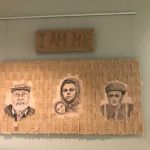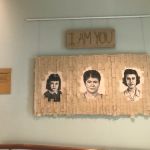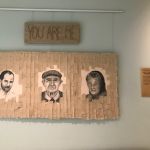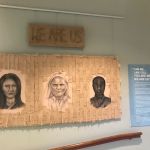“I am me… I am you… You are me… We are us.” This quote explains the idea that every immigrant that came to the United States each brought a “thread of themselves, culture, and homeland” to form the fabric of their new home and life.
Students of the National Art Honor Society in New Jersey created these portraits with charcoal to paint a picture of how people from various cultural backgrounds may have looked like during the time of the Great Migration.
Throughout the migration, the media reacted in different ways through political cartoons. However, coming from a Lebanese household and visiting Lebanon every year, I decided to focus on the Muslim aspect of the migration. First, the Arab immigration period began around 1870 and lasted until 1924, where the Quota Act ended immigration for the time being.

Photo by Layal Srour
Within that time, 110,000 immigrants entered the US. Arabs that were immigrating at the time were regarded as Syrians until the Lebanese nationalist movement regarded Lebanon as an independent nation-state, and immigrants began adopting a Lebanese identity. At Ellis Island, I saw an artifact during 1917 where the Syrian-American Commercial Press published The Works of Franklin “to raise money for the Lebanese Refugee and Victims Aid Committee Project.”
By 1965, the United States passed a new immigration law known as the Immigration and Nationality Act of 1965, resulting in “757,626 Arab immigrants by 2003, and 175,000 Lebanese immigrants by 2005.” Today, Arabs make up 1.2% of the US population, and 80% of them are citizens, with Lebanese being the largest group of Arab-Americans in every state except for New Jersey.
This means a lot to me because both of my parents, my mother’s family and my father’s brother all immigrated to the United States at a young age and were able to get an education and build a better life opportunity here. Without my family immigrating here, I do not think I will have the same opportunities and living the life I am now. My parents were able to be successful in coming here, allowing my siblings and me to go to college and further our education.
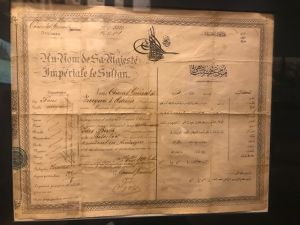
Photo by Layal Srour
Since the immigration time period, many Lebanese immigrants have made a successful life in the United States through their work that we still hear about today, even after their death.
For example, one immigrant whose name is very well known is Khalil Gibran, who was a Lebanese-American poet, writer, visual artist, and Lebanese nationalist, and passed away in 1931 in New York. Another important name in Lebanon was Riad Al Solh, who was the first Prime Minister of Lebanon after Lebanon gained its independence. Third, George Atallah was a child when he immigrated to New York from Lebanon and now works in the NFL as the assistant executive director of external affairs. Nassim Nicholas Taleb is a Lebanese-American immigrant who works as an essayist, scholar, and statistician. Other successful immigrants include Michael DeBakey (heart surgeon), Gregory Khouri (Tesla), Elie Saab (Fashion Designer), Carlos Slim (Nissan CEO), and more.
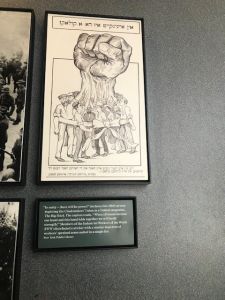
Photo by Layal Srour
Besides Lebanon itself, Lebanese immigrants make up a large population in other countries such as Brazil, United States, Venezuela, Argentina, Colombia, Mexico, Australia, Canada, France, Saudi Arabia and Syria. There are 6.4 million Lebanese citizens in Brazil, 2 million in the United States, 1.35 million in Argentina, 420,000 in Venezuela, 400,000 in Colombia, 340,000 in Mexico, 310,000 in Australia, 225,00 in both Canada and France, 210,000 in Saudi Arabia, and 115,000 in Syria.
Lastly, a political cartoon I saw at Ellis Island was a 1910 Yiddish magazine titled “In unity- there will be power!” depicted cloak makers and the caption reads, “when all hands become one hand and this hand folds together we will build strength.” This put into perspective that the immigrants just wanted unity and to feel accepted in what would be their home away from home.

